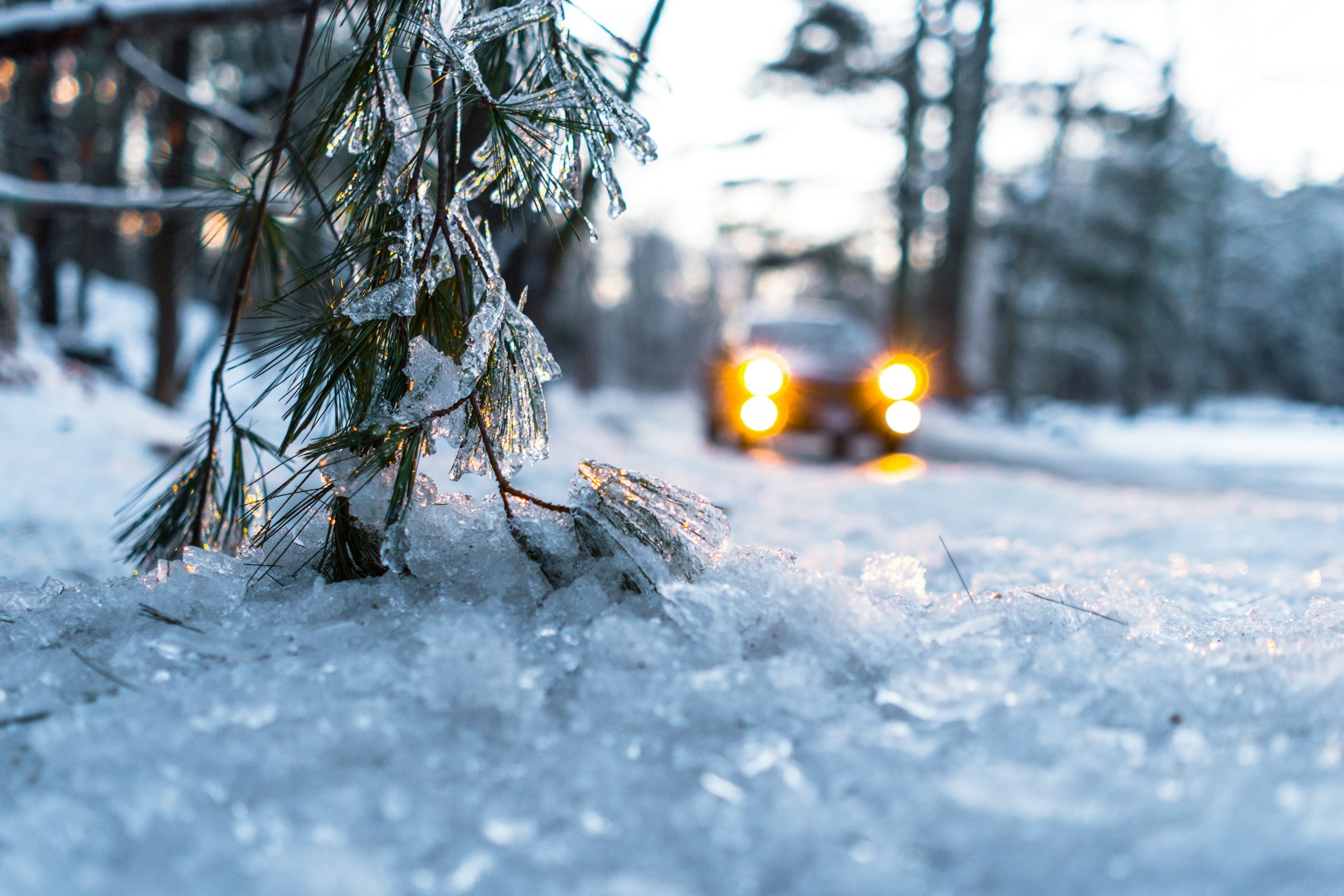According to the AAA Foundation for Traffic Safety, winter weather and the associated road conditions contribute to almost half a million crashes and over 2,000 road deaths every year. Carrying proper insurance is one way to protect yourself and others on the road. Here at American Auto Insurance, we offer a wide range of coverage options, including insurance plans that comply with SR-22 regulations, and we’re one of the cheapest and most reliable insurance providers for Illinois residents. You can further enhance your safety on the snowy roads of Illinois with these essential guidelines for driving in winter weather.
Prepare Your Vehicle for Winter

car on snow during daytime by Matt Collamer is licensed with Unsplash License
Schedule a tuneup for your vehicle before winter weather sets in. Your local shop can make sure all your fluids are topped off and suitable for winter performance. You’ll need to consider your coolant’s freeze protection, the weather rating of your windshield wiper fluid, and the type of oil in your vehicle.
Make sure you have good tread on your tires. While a 2/32-inch tread is the minimum for your tires, you really want at least 4/32 of an inch in winter since tire performance decreases dramatically after this point. Consider switching to winter tires if you regularly drive on snowy roads that aren’t cleared in winter.
Test your car battery to ensure it’s in good condition and clean the battery terminals with a wire brush to remove acid residue and grease. Finish with a battery terminal protectant spray to maintain its performance throughout the season.
Proper lubrication will improve your vehicle’s winter performance in numerous ways. Consider the following to avoid lubrication issues:
- Spray silicone in the window tracks and wipe it along the weather stripping to prevent damage from freezing water.
- Put graphite lock lubricant into your door locks.
- Spray lithium grease on the hood latch to prevent sticking after exposure to road salt.
Clear Snow and Ice Thoroughly
If you keep your vehicle outside, adjust your plans for winter events to include plenty of time to prepare your vehicle for every trip. You don’t want to find yourself in such a rush that you drive off with partially cleared windows and a pile of snow on the roof. Snow and ice can be dangerous to yourself and others when driving. Ice from the tops of cars and trucks has been known to fly off and shatter the windshields of the drivers behind.
Before driving, you should thoroughly clear snow and ice from the roof, hood, trunk, windshield, and all windows of the car. Check for accumulated snow under the fenders and remove any buildup since this can prevent your tires from turning.
Go Slow and Smooth
When driving on wet, snowy, or icy roads, your tires don’t have as much traction as usual. This means that you’re not gripping the roads the way you usually would. Maneuvers that would work on dry roads can leave you careening out of control, which is how many collisions begin.
On a dry road, it takes between 60 and 100 feet to stop if you’re traveling at just 35 mph. On packed snow, your stopping distance increases to 180 feet or more at the same speed. This gets far trickier if you’re driving on ice. In icy conditions, it can take 600 feet or more for your vehicle to stop when traveling at 35 mph.
In winter weather, drive slower than usual and keep a generous distance between yourself and other vehicles. Avoid sharp turns and any sudden maneuvers. Accelerate and decelerate slowly to control the vehicle, even in hazardous conditions.
Take Hills Carefully
Hilly terrain is especially challenging in the snow. Accelerate slightly as you approach the hill so you’ll have extra inertia to carry you up. Don’t accelerate while you’re actually on the hill, as this will just cause your tires to spin. Slow down as you reach the top and reduce your speed significantly as you’re cresting the hill. You won’t need much more than gravity to get you down the other side.
Stay Away From Snowplows
Snowplows have an essential job to do in winter, but you should give them space while they work. The snow from the plow can blow back and hit your windshield if you drive too close. The size and shape of the plow may also compromise the peripheral vision of snowplow drivers, so it’s best to allow them ample room to maneuver.
Keep the Vehicle Fueled Up and Charged
Stay diligent about keeping your gas tank full and your electric battery charged in the winter months. If you’re stuck in traffic or a winter storm, you’ll want plenty of energy to keep your vehicle running as long as possible. Strive to keep your gas tank at least half-full and your electric battery at 80% charge or higher. If you’re stuck, turn down the heat and set the seat heaters low to minimize energy use while you wait.
Carry a Winter Emergency Kit
Although you should always have an emergency kit in your car, some special items are particularly important in the cold weather months. Inspect your emergency kit and make sure that you have the following:
- Emergency blankets.
- Warm gloves, socks, and hats.
- A small shovel.
- A windshield ice scraper.
- A snow brush.
- Kitty litter for improving traction.
- Duct tape and trash bags to seal off the windows if you’re stuck in your vehicle in freezing weather.
Add these items to your standard car emergency kit, which should also include things such as jumper cables, emergency signaling items, a can of tire sealant, motor oil, spare fuses, supplies to change a flat tire, and a first aid kit.
Protect Yourself With Proper Car Insurance
At American Auto Insurance, we help drivers navigate the entire auto insurance process, from selecting a plan to setting up coverage. We can even help you comply with SR-22 regulations if the state requires you to carry this kind of coverage. Call us now to get started with affordable car insurance you can rely on.


